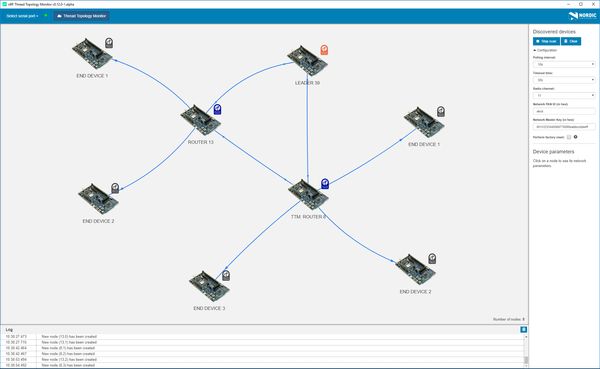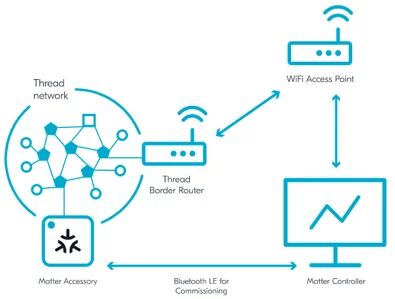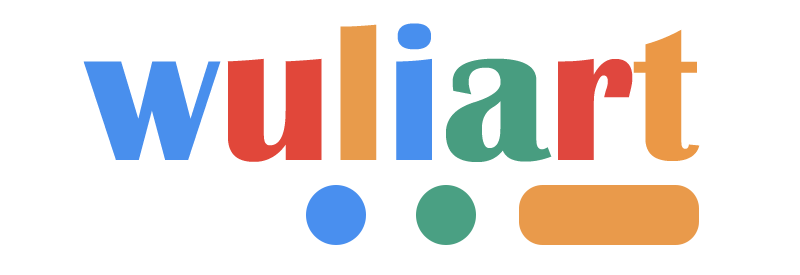Meter Smart Home
Matter, the CHIP project (Connected Home over IP) started in December 2019. The founding companies are Amazon, Apple, Google, and other companies including Nordic Semiconductor. Its goal is to achieve a unified application layer standard for smart home devices. The goal of Matter is to enable manufacturers to easily create safe and reliable solutions. These solutions will achieve interoperability and interoperability with major smart home ecosystems such as Apple's Siri, Google's Assistant, and Amazon's Alexa.By ensuring interoperability between Thread, Wi Fi, and Ethernet, Matter will enable developers to easily build innovative devices for implementation in any home automation ecosystem. Next, let's explore the various possibilities that Matter brings together.
For a long time, the development of the smart home industry has been relatively slow, but in recent years, the industry has finally ushered in a rapid growth momentum. According to the survey analysis company Statista, the smart home market is expected to generate $154.4 billion in revenue by 2024. Among them, approximately 60 billion US dollars will be contributed by smart home appliances.
The booming market has brought abundant returns to smart home devices. However, pushing products to the market is not easy. In addition to obvious technical issues, developers also face other challenges. The most crucial aspect is which type of smart home ecosystem to adopt. Amazon's Alexa, Apple's HomeKit, Google Home, or Samsung SmartThings, along with some proprietary options, often make it difficult to decide which direction to focus on, especially for smart home companies going global.
The good news is that these major manufacturers, as well as many other manufacturers serving in the smart home industry, have recognized the challenges faced by developers and have joined forces with the support of the Connectivity Standards Alliance (CSA). The result is Matter - a unified IP connection protocol based on mature technology, which enables developers to more easily build reliable smart home products and achieve seamless connection with the Internet of Things ecosystem.
At present, the range of products certified by Matter is constantly expanding. According to a report by technology intelligence company ABI Research, it is predicted that by 2030, the shipment of smart home devices that support the Matter protocol will exceed 5.5 billion units. But what exactly is Matter? And how easy is it to integrate it into smart home products?
Deep exploration of Matter
Firstly, Matter is a wireless protocol based on existing Thread and Wi Fi smart home wireless technology (as well as Bluetooth LE for debugging). It provides a unified application layer that enables developers to ensure that their products are compatible and interoperable with those of other manufacturers.
How Matter Expands Opportunities for Smart Home Product Developers
Figure 2: Bluetooth LE is used for debugging Matter devices, but not for transmitting data across networks
In typical smart home settings, low-power Matter devices will run on a Thread network, while devices with higher power and data bandwidth requirements will use Wi Fi. Thread and Wi Fi support Internet Protocol (IP), which is a proven and widely used technology, and can be used as a network layer communication standard to quickly move data on the Internet. Each Thread or Wi Fi device has its own IP address, and interoperability with the protocol makes it very easy for them to connect to the cloud.
Is implementing Matter worth it?
For suppliers, designing products that are compatible with Matter increases the complexity of the entire process, for example, due to strict safety requirements, but this does bring the advantage of making the product more trustworthy and protected. In addition, the cost of bringing Matter certified devices to the market will be higher than launching devices that are only compatible with a single global IoT ecosystem or proprietary alternatives.
In addition, devices compatible with Matter require Bluetooth LE and Thread connections (for Matter over Thread devices) or Wi Fi (for Matter over Wi Fi devices), as well as sufficient computing power and memory to run the Matter stack. For wireless device firmware update (OTA-DFU) activities, this solution will require up to twice the amount of flash memory compared to standalone application software. Based on implementation experience, standard Matter devices require at least 1MByte of built-in flash memory (plus the same amount of external flash memory) and 256kBytes of RAM. If the device is expected to do more than just run Matter, it will require more additional resources.
Matter relies on widely implemented Wi Fi access points (APs) that will support interaction with compliant devices. The Thread border router is also necessary for the Thread device that requires an Internet connection to achieve certain functions (such as voice commands). Despite facing some challenges, Matter has proven to be of great benefit to the developer community, as device manufacturers can overcome the limitations of a single ecosystem by building products that meet requirements. This makes the market for its equipment three or four times larger than when it does not meet the requirements. Matter also benefits consumers as it means that all of their smart appliances are no longer limited to a single supplier.
Bluetooth LE debugging and Matter over Thread
Bluetooth LE is a mature low-power wireless technology that is adopted by almost all modern smartphones. This is crucial because smartphones are the ideal choice for setting up smart home devices. Therefore, Bluetooth LE is supported in the Matter standard and can be used for debugging and configuration, while a drawback of Bluetooth LE is the lack of interoperability with the IPv6 protocol. Therefore, smartphones or other gateway devices are required to connect to Wi Fi networks.
In contrast, Thread is a mesh network protocol based on IPv6 and IEEE 802.15.4 Media Access Control (MAC)/Physical Layer (PHY). It is designed for low bandwidth applications and brings good energy efficiency characteristics to simple devices such as smart sockets or smart light bulbs. Thread is a self-healing, low-power mesh network that can adapt to devices added to or removed from the network. It can bring low latency operations (as devices can communicate directly with each other without the need for an intermediate hub), built-in redundancy, and extended battery life.
How Matter Expands Opportunities for Smart Home Product Developers
Figure 3: Thread is an IPv6 based mesh protocol based on IEEE 802.15.4 MAC and PHY
Although Thread products can run without Thread boundary routers, Matter over Thread networks require these routers. This type of router allows Thread devices to access the local network and communicate with other IP based devices, such as Wi Fi products. Wi Fi AP, smart speakers, and smart lighting can be integrated with a Thread border router. Any Thread boundary router can communicate with any Thread device on the same network, just like any Wi Fi router can communicate with any Wi Fi device. Once the Thread device becomes part of the Matter over Thread network, it can be used in conjunction with any Matter platform.
Matter over Wi Fi
Wi Fi is crucial to the success of Matter, because many smart home devices compatible with this standard use Wi Fi to connect to the Internet and exchange data with other devices and cloud based services. For example, a MATER compatible smart thermostat may use Wi Fi to connect to the Internet in order to access weather information or energy usage data to improve its performance.
The current Wi Fi specification version, Wi Fi 6, makes popular wireless technologies more suitable for IoT applications, such as those used in home automation. For example, the nRF70 series Wi Fi 6 supporting IC is part of Nordic's product portfolio. The nRF7002 is an energy-efficient Wi Fi 6 device that provides seamless dual band (2.4GHz and 5GHz) connectivity and strong coexistence with Bluetooth LE, Thread, and Zigbee radios.
The Matter application layer makes it easier for Thread devices to communicate with home Wi Fi networks and from there with the cloud. Matter devices that use Wi Fi for network transmission do not require built-in mesh network support, as the coverage range of Wi Fi 6 allows Matter devices to be within coverage in most cases.
How Matter Expands Opportunities for Smart Home Product Developers
Figure 4: Thread boundary router allows Thread devices in the network to access the local network and communicate with other IP based devices (such as Wi Fi products)
How to start using Matter
Currently, chip companies are making it easier for developers to integrate Matter into their new smart home products. For example, Nordic offers several ultra-low power, multi protocol SoCs that support both Bluetooth LE and Thread protocols. NRF52840 enables Bluetooth LE for debugging and Thread for data transmission. The company's newly launched nRF54H and nRF54L series are equipped with Arm Cortex-M33 application processors and sufficient memory, optimized for the next generation of Matter over Thread terminal products.
The nRF Connect software development kit (SDK) supports Matter use cases, including weather stations, light bulbs, light switches, door locks, and Matter to Bluetooth LE bridges. The meteorological station option uses sensors to remotely collect temperature, pressure, and relative humidity data. It operates as a Matter attachment device and can be paired or remotely controlled through a Matter over Thread network.
The latest updates on the Matter standard
The 1.2 version of Matter was launched in October 2023- revisions and additions were made to existing categories, and core improvements were made to the specifications. It also adds 9 new types of equipment - refrigerators, room air conditioners, dishwashers, washing machines, robotic vacuum cleaners, smoke/carbon monoxide alarms, air quality sensors, air purifiers, and fans.
The core improvements that benefit from the Material 1.2 specification include:
Enhanced functionality can capture common configurations of combination latch and bolt lock units.
Add device appearance description.
Nowadays, devices can be composed of complex endpoint layers to achieve precise modeling.
Semantic tags provide an interoperable way to describe the location and semantic functionality of generic Matter clusters/endpoints, enabling consistent rendering/application between different clients.
• Allow for the general expression of descriptions of different operating modes of devices, making it easier to generate new device types in future revisions of Matter.
How Matter Expands Opportunities for Smart Home Product Developers
Figure 5: Matter enables Thread and Wi Fi networks to work harmoniously together
Matter 1.2 also provides important enhancements in testing and certification programs. This will help businesses push products (such as hardware, software, chipsets, and supporting applications) to the market faster. In addition, it also includes the Matter 1.2 SDK available for new platforms and enhancements to the open-source Matter Test Harnesses. This tool helps to ensure the correct implementation of specifications and their functionality.
Improving the performance and security of smart homes
The emergence of Matter indicates that the quality and safety of smart home products will continue to improve in the long term. With the resolution of interoperability issues, device manufacturers can focus more on driving product quality improvement and the development of new features. As Matter is expected to become the de facto standard for smart homes, implementing stronger and standardized safety standards for home appliances may also become easier.
Before the emergence of Matter, home automation was welcomed by early adopters who were proficient in technology, but it was confusing for the mainstream market. Now, Matter has made it easier for consumers to adopt smart home technology and successfully activated the market. Therefore, the concept of smart homes is finally expected to fulfill its expected commitments.
